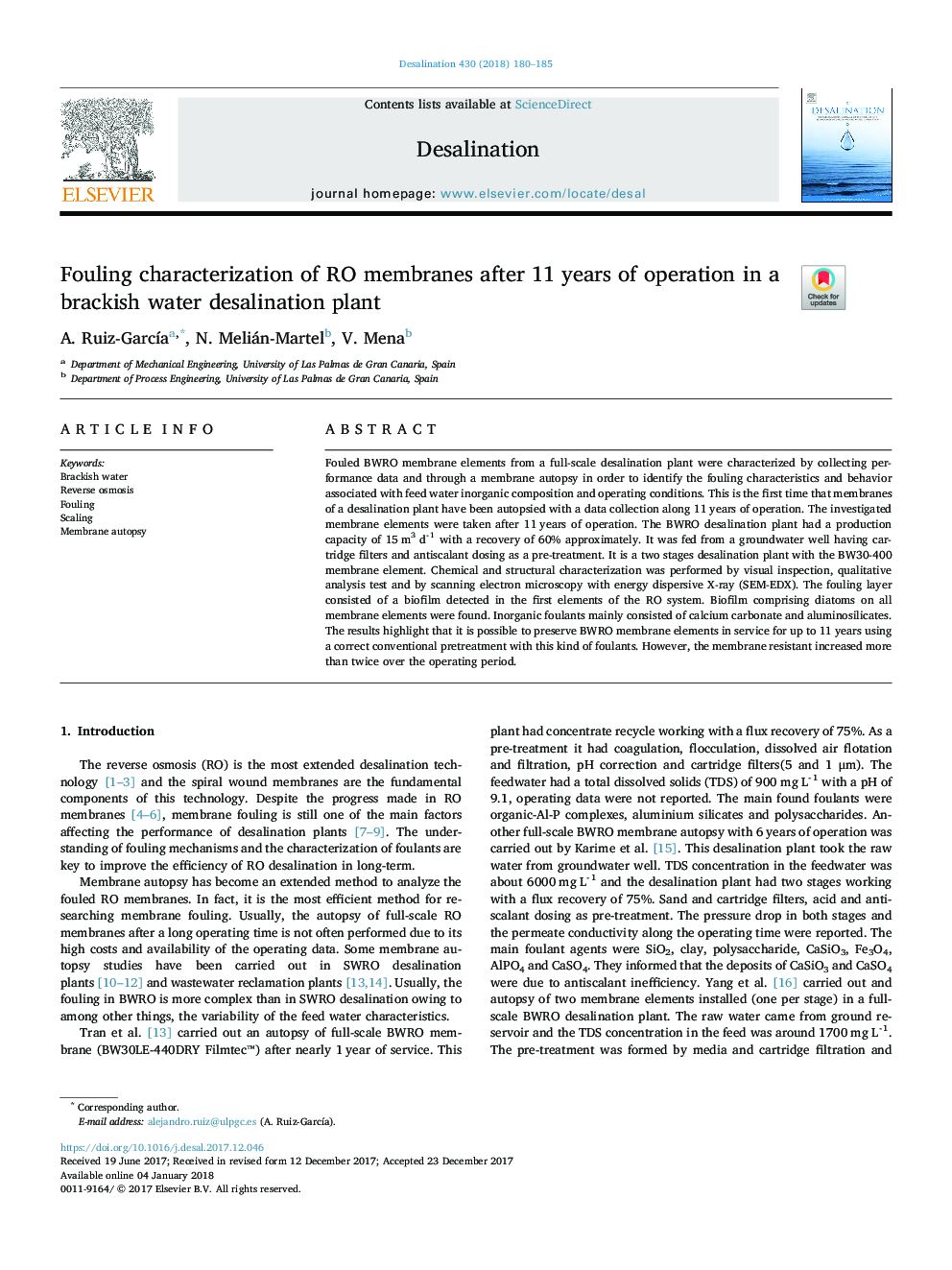| Article ID | Journal | Published Year | Pages | File Type |
|---|---|---|---|---|
| 7008061 | Desalination | 2018 | 6 Pages |
Abstract
Fouled BWRO membrane elements from a full-scale desalination plant were characterized by collecting performance data and through a membrane autopsy in order to identify the fouling characteristics and behavior associated with feed water inorganic composition and operating conditions. This is the first time that membranes of a desalination plant have been autopsied with a data collection along 11Â years of operation. The investigated membrane elements were taken after 11Â years of operation. The BWRO desalination plant had a production capacity of 15Â m3 d-Â 1 with a recovery of 60% approximately. It was fed from a groundwater well having cartridge filters and antiscalant dosing as a pre-treatment. It is a two stages desalination plant with the BW30-400 membrane element. Chemical and structural characterization was performed by visual inspection, qualitative analysis test and by scanning electron microscopy with energy dispersive X-ray (SEM-EDX). The fouling layer consisted of a biofilm detected in the first elements of the RO system. Biofilm comprising diatoms on all membrane elements were found. Inorganic foulants mainly consisted of calcium carbonate and aluminosilicates. The results highlight that it is possible to preserve BWRO membrane elements in service for up to 11Â years using a correct conventional pretreatment with this kind of foulants. However, the membrane resistant increased more than twice over the operating period.
Related Topics
Physical Sciences and Engineering
Chemical Engineering
Filtration and Separation
Authors
A. Ruiz-GarcÃa, N. Melián-Martel, V. Mena,
